What’s the Average Lifespan of a Tuxedo Cat?
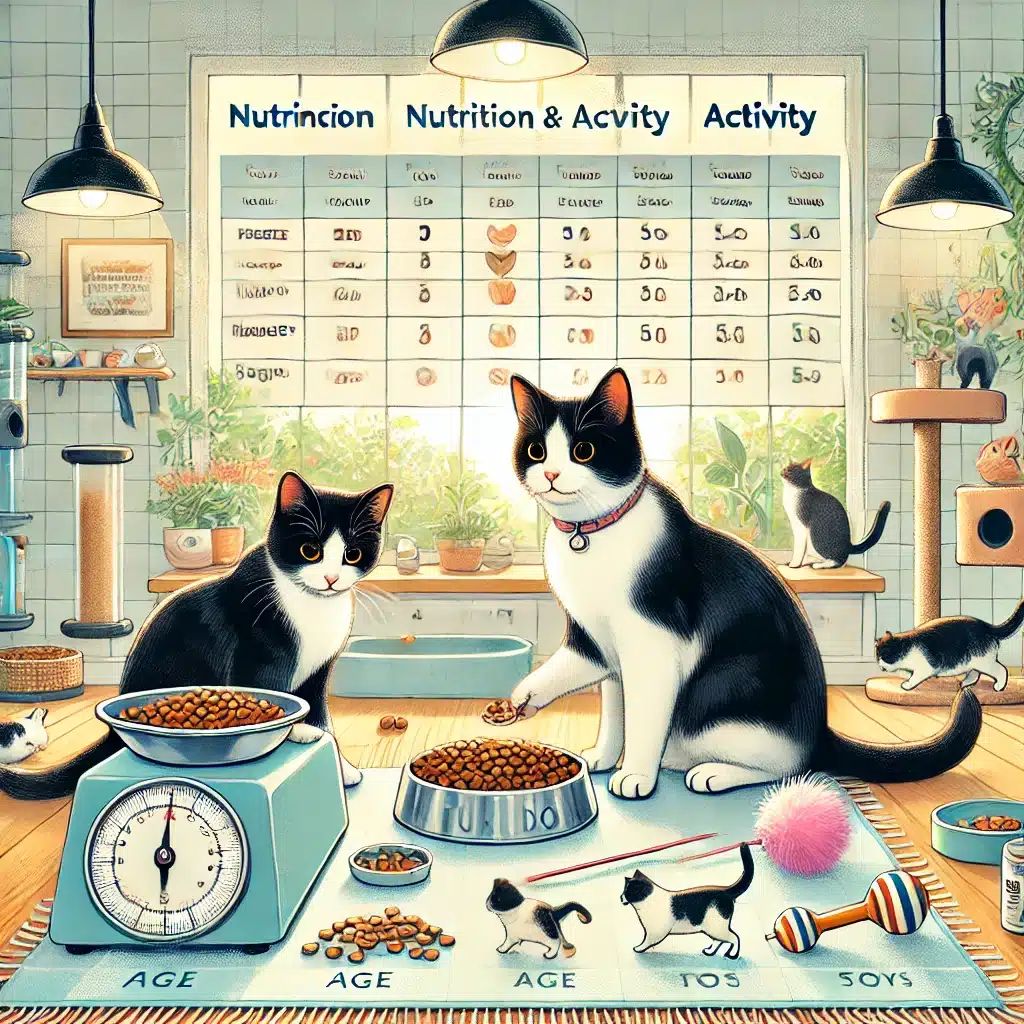
Tuxedo cats, celebrated for their elegant black-and-white coats, are not a breed but a color pattern. Their average lifespan or how long do tuxedo cats live depends on their breed, coat type, gender, and environment. Let’s break it down: On average, tuxedo cats live around 12-16 years, though some have been known to surpass this range with proper care and a healthy lifestyle. Among notable tuxedo cat facts and traits are their intelligence and playful personalities, which make them beloved companions. Additionally, factors like regular veterinary check-ups and a balanced diet can significantly contribute to their longevity.
Average Lifespan by Coat Type
Long-Haired Tuxedo Cats
Found in breeds like Maine Coons or Norwegian Forest Cats, they generally live 12–15 years, though with excellent care, they can reach their late teens.
Mitted Tuxedo Cats
Common in breeds like Ragdolls, these cats typically live 12–16 years, benefitting from their mostly indoor lifestyles.
Black Tuxedo Cats
Usually Domestic Shorthairs, their lifespan ranges from 13–17 years, with some living up to 20 years in ideal conditions.
Other Tuxedo Patterns (Van, Harlequin, etc.)
Their life expectancy depends on the breed. For instance, a Siamese tuxedo-patterned cat may live 15–20 years, given their robust genetic health.
Male vs. Female Tuxedo Cat Lifespan
- Male Tuxedo Cats: Male cats generally live slightly shorter lives than females due to their adventurous nature, which increases risk factors like injuries and accidents. On average, a male tuxedo cat lives 12–15 years if neutered and kept indoors.
- Female Tuxedo Cats: Females tend to have a slightly longer lifespan, averaging 13–17 years, as they are often less prone to outdoor dangers and aggressive behaviors.
Tuxedo Cats Lifespan Outdoor
Regardless of coat type or gender, outdoor tuxedo cats face a reduced lifespan of 2–5 years due to risks like predators, accidents, and exposure to diseases.
Tuxedo Cat Lifespan Indoor
With a safe environment, quality nutrition, and regular veterinary care, indoor tuxedo cats often live into their late teens or even 20+ years.
How to Ensure a Long Life
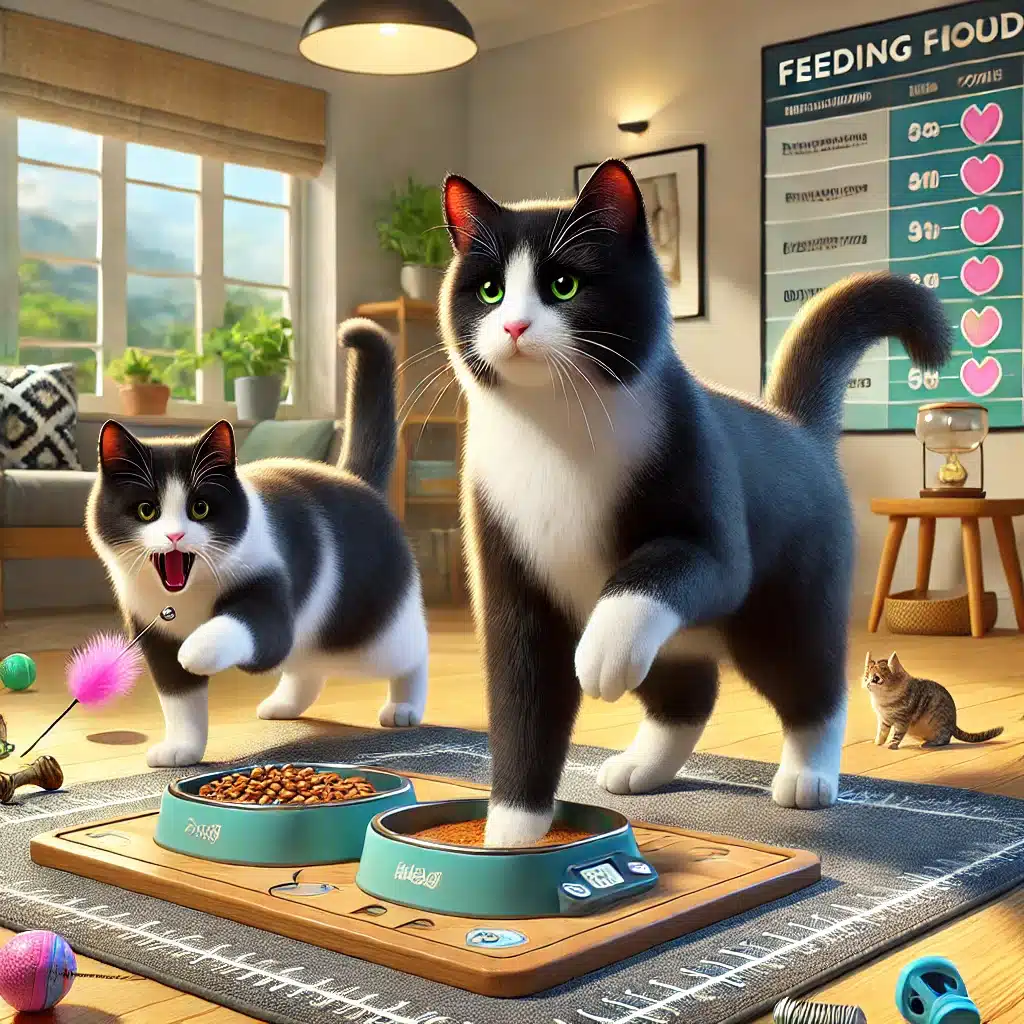
No matter the coat style or gender, proper care is key to maximizing your tuxedo cat’s lifespan:
- Provide a balanced diet tailored to their breed and activity level.
- Schedule routine veterinary checkups for preventative care.
- Keep them indoors or in a safe, supervised outdoor space.
- Regular grooming and mental stimulation ensure overall well-being.
By understanding these factors, you can give your tuxedo cat the best chance at a long and healthy life!
Nutrition and Activity for Tuxedo Cats
Diet Matters for Longevity
A balanced diet plays a vital role in the health and life expectancy of your tuxedo cat. Tuxies thrive on species-appropriate, nutrient-rich, and moisture-packed diets tailored to their life stage (kitten, adult, or senior). Each cat has unique dietary needs based on breed, size, and activity level. Consult your vet to ensure you’re meeting these requirements.
Managing Weight and Activity
While some breeds, like Maine Coons, are naturally active and less prone to obesity, less energetic tuxedo cats (e.g., American Shorthairs) require a proactive approach to maintain a healthy weight. Here’s how to help:
- Portion Control: Use a kitchen scale for precise measurements instead of relying on cups. Follow feeding guidelines provided on food packaging based on your cat’s size and age.
- Regular Exercise: Engage your tuxedo cat in play sessions with interactive toys, such as laser pointers or feather wands, to keep them active and healthy.
Avoid Overfeeding
Overfeeding can lead to obesity and health issues. Watch for signs like a rounded belly or difficulty jumping. If you’re unsure whether your tuxedo cat is at a healthy weight, a vet can help assess and guide adjustments.
By combining proper nutrition and regular activity, you can support your tuxedo cat’s health and ensure they stay active and happy for years to come.
Regular Grooming and Mental Stimulation for Tuxedo Cats
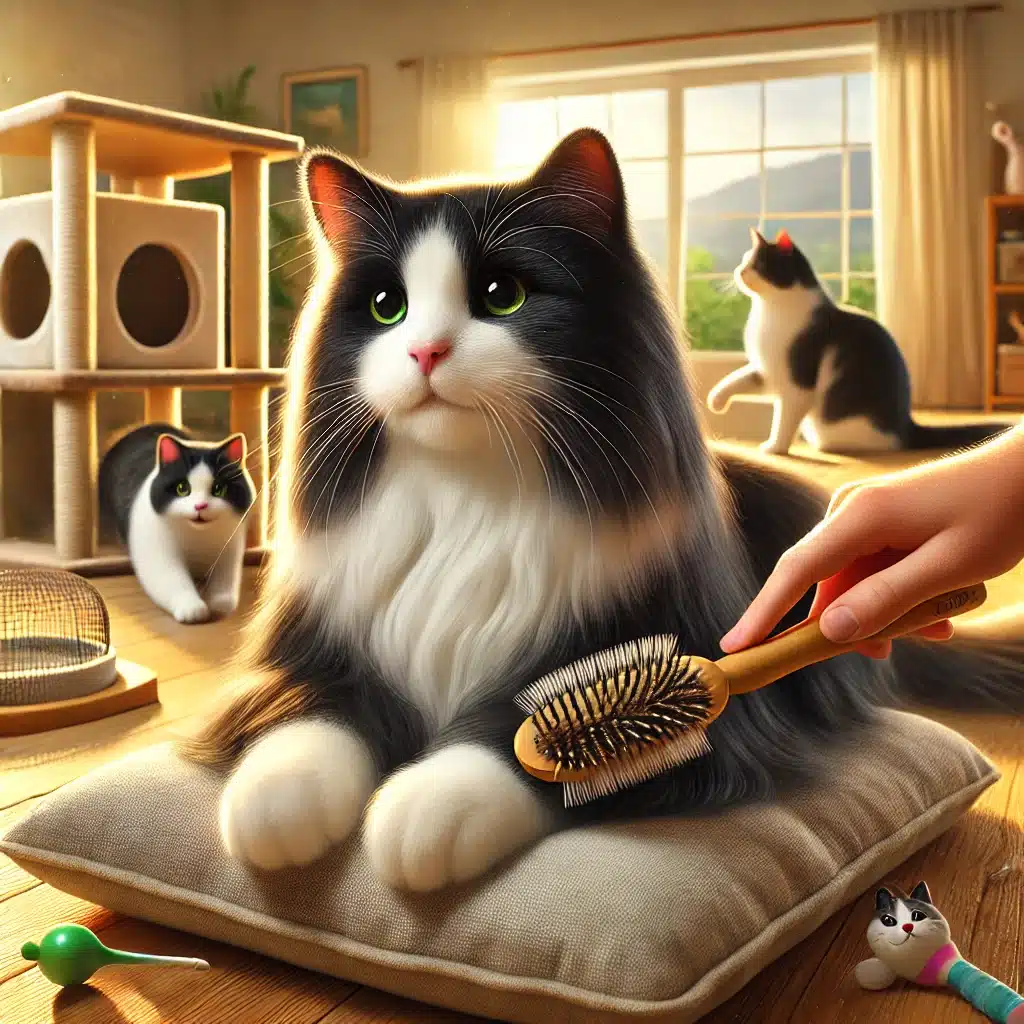
Grooming for a Healthy Coat:
Regular grooming is essential to keep your tuxedo cat’s coat shiny and tangle-free, especially for long-haired tuxedo breeds. Here’s what you can do:
- Short-Haired Tuxedo Cats: Weekly brushing helps remove loose fur and keeps shedding under control.
- Long-Haired Tuxedo Cats: Daily brushing prevents mats and tangles, ensuring a healthy, glossy coat.
- Additional Grooming Tips: Trim nails every two weeks and clean their ears and teeth regularly to prevent infections or dental issues.
Mental Stimulation for a Happy Cat:
Keeping your tuxedo cat mentally engaged prevents boredom and destructive behavior. Try these ideas:
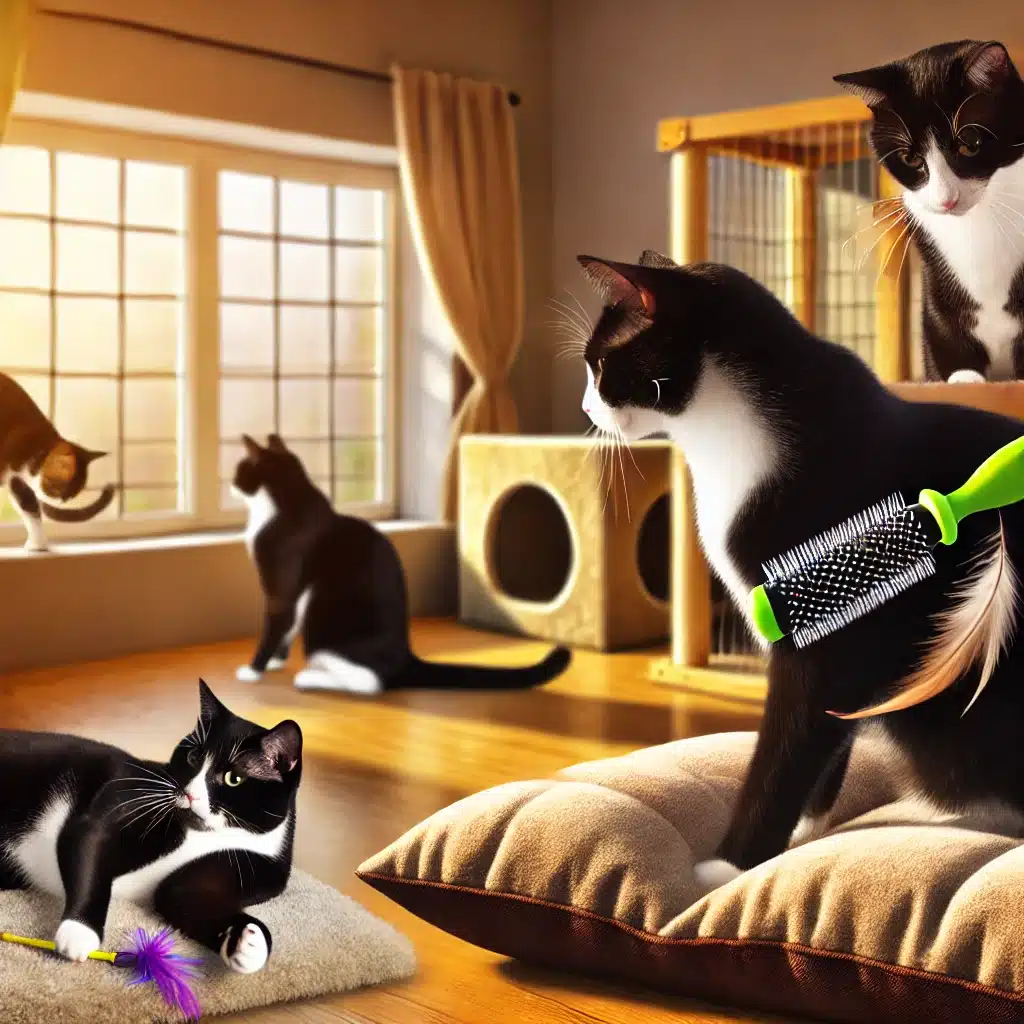
- Interactive Play: Use feather wands, laser pointers, or treat-dispensing toys to keep their minds and bodies active.
- Puzzle Feeders: Combine mealtime with a mental challenge using puzzle toys.
- Scratching Posts & Perches: Provide a variety of scratching surfaces and high spots for them to explore.
Supervised Outdoor Space:
For cats that enjoy the outdoors, a secure, supervised space can offer enrichment while keeping them safe. Options include:
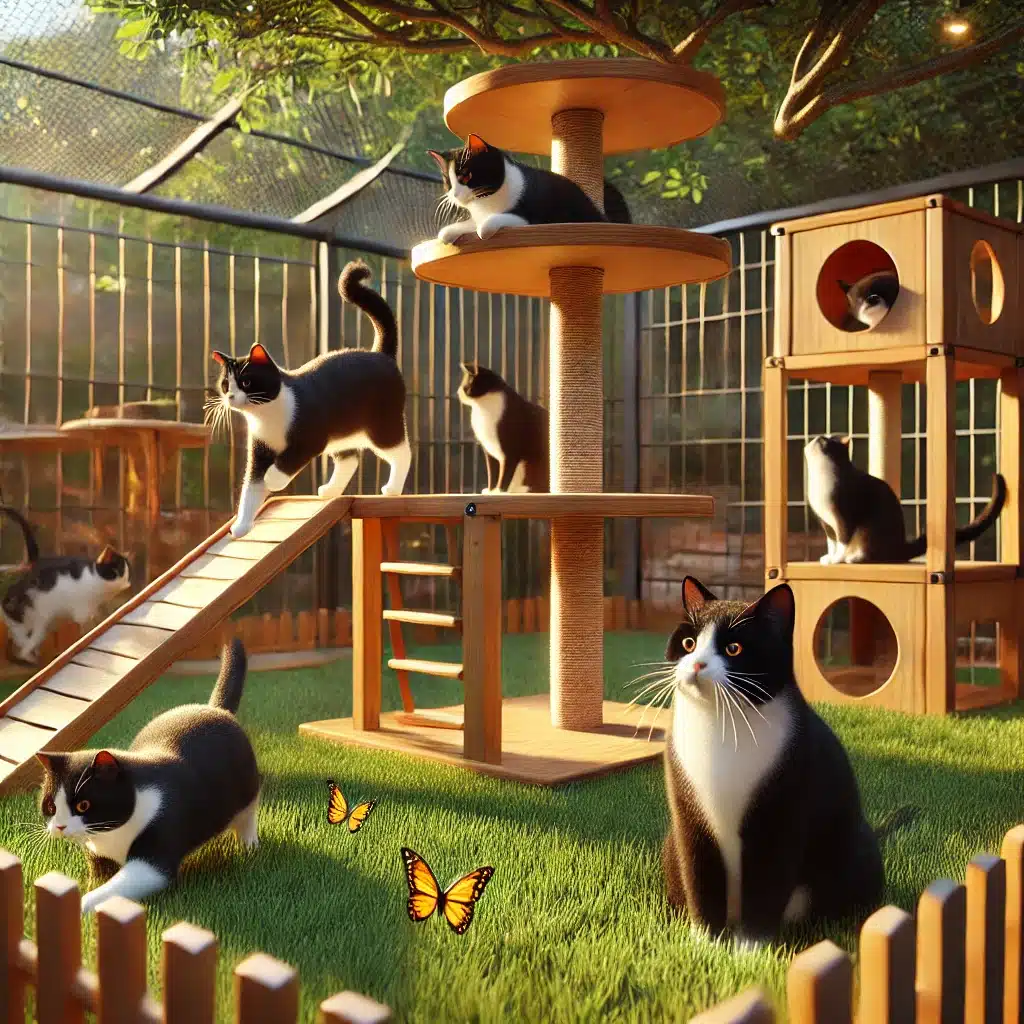
- Catio or Enclosed Space: A screened outdoor enclosure allows your cat to enjoy fresh air without the risks of free-roaming.
- Harness Training: Train your tuxedo cat to walk on a leash for a safe outdoor adventure.
With consistent grooming, plenty of mental stimulation, and a secure outdoor experience, your tuxedo cat will lead a balanced and fulfilling life. These captivating felines are known for their unique personalities and striking appearance, making them a joy to have as companions. Understanding the quirks and breeds of tuxedo cats can help you cater to their specific needs and celebrate their individuality. By providing love, care, and attention, you’ll foster a bond that brings endless happiness to both you and your tuxedo-clad friend.
Weight Chart for Tuxedo Cats Based on Age, Gender, Size, and Breed
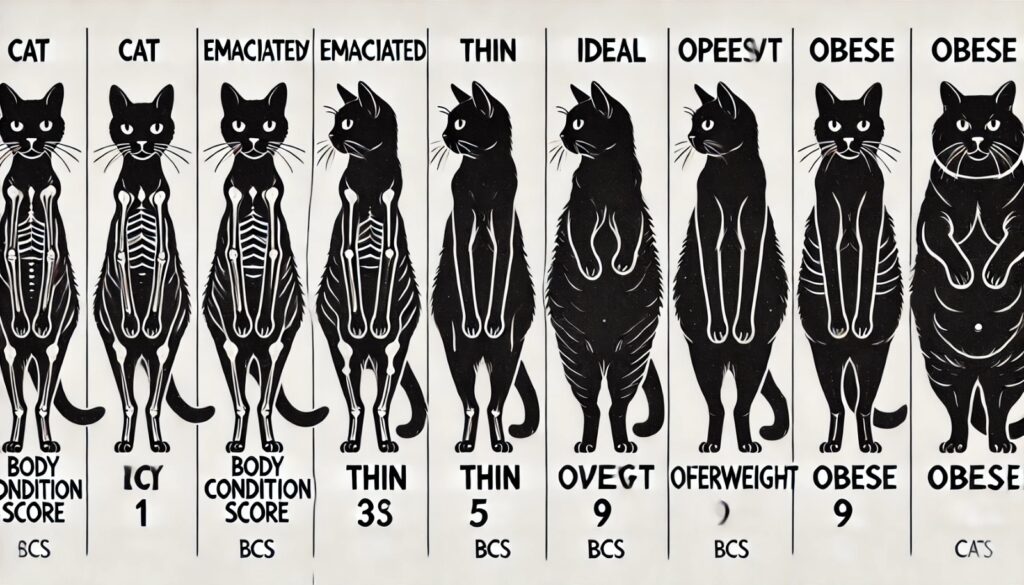
Here’s a general guide to the expected weight ranges for tuxedo cats, factoring in age, gender, size, and breed variations. Note that tuxedo cats are not a specific breed, so their weight will align with their respective breed standards. When it comes to tuxedo cat breeds, some popular options to consider include the American Shorthair, British Shorthair, and Maine Coon. These breeds can have different average weight ranges, with American Shorthairs typically weighing between 11-15 pounds, British Shorthairs between 9-18 pounds, and Maine Coons between 13-18 pounds. It’s important to consult with a veterinarian to ensure that your tuxedo cat is within a healthy weight range for their specific breed.
Small Breeds
| Male (e.g., Siamese) | Female (e.g., Siamese) | |
| Kitten (0–6 Months) | 0.8–2.5 kg | 0.8–2 kg |
| Young Adult (6–12 Months) | 2.5–4.5 kg | 2–4 kg |
| Adult (1–6 Years) | 4.5–6 kg | 3.5–5 kg |
| Senior (7+ Years) | 4–5.5 kg | 3–4.5 kg |
Medium Breeds
| Male (e.g., Siamese) | Female (e.g., Siamese) | |
| Kitten (0–6 Months) | 1–3 kg | 0.8–2.5 kg |
| Young Adult (6–12 Months) | 3–5.5 kg | 2.5–5 kg |
| Adult (1–6 Years) | 5.5–7.5 kg | 4–6.5 kg |
| Senior (7+ Years) | 5–7 kg | 3.5–6 kg |
Large Breeds
| Male (e.g., Siamese) | Female (e.g., Siamese) | |
| Kitten (0–6 Months) | 1.5–4 kg | 1–3.5 kg |
| Young Adult (6–12 Months) | 4–6.5 kg | 3.5–5.5 kg |
| Adult (1–6 Years) | 6.5–9 kg | 5.5–7.5 kg |
| Senior (7+ Years) | 6–8.5 kg | 5.5–7.5 kg |
Notes:
- DSH: Domestic Shorthair, a common breed that often has tuxedo-patterned cats.
- Tuxedo cats with long-haired breeds (e.g., Norwegian Forest Cats or Persians) may weigh slightly more than their short-haired counterparts.
- Weight tends to peak during adulthood (1–6 years) and may slightly decrease in senior years due to reduced activity levels.
Tips:
- Always monitor your tuxedo cat’s weight using a Body Condition Score (BCS)** to ensure they are in the ideal range for their size and breed. Body Condition Score (BCS)**: Ensure your tuxedo cat’s weight falls within the healthy range using a BCS chart. An ideal BCS score of 5 indicates a well-proportioned body with a visible waistline and no excess fat.
Breed-Specific Considerations:
- Long-haired tuxedo cats (e.g., Persians) may appear heavier due to their fluffy coats but should be weighed regularly for accuracy.
Activity and Lifestyle:
- Indoor tuxedo cats are at higher risk of becoming overweight. Balanced playtime and controlled feeding schedules are key to maintaining their ideal weight.
- Consult your vet if your tuxedo cat is underweight or overweight to determine the best diet and care plan for their life stage.
